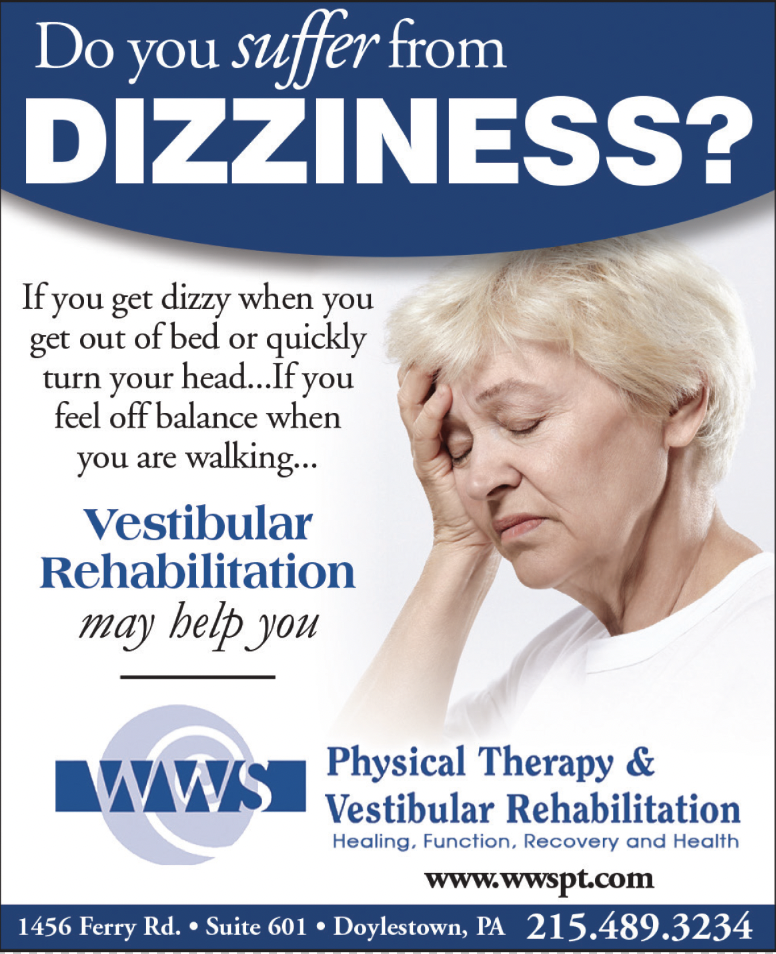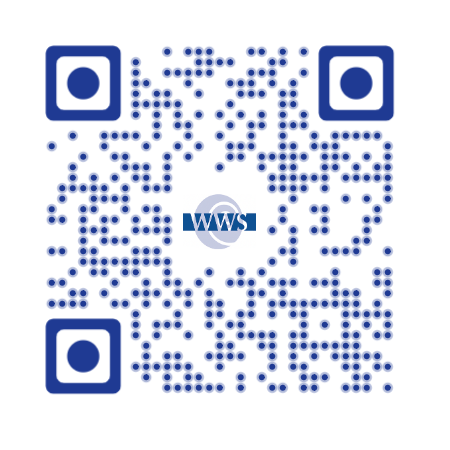Article from the latest issue of The Bucks County Women’s Journal (BCWJ)
A good healthcare provider can often correctly diagnose a problem by taking a thorough history and listening carefully to the patient’s symptoms. However, if treatment decisions were made based on the history alone, there would be cases where the patient is incorrectly diagnosed. Diagnostic testing can help avoid these problems by giving objective findings to support the diagnosis and show treatment success.
Appropriate diagnostic testing is essential for people with dizziness and balance problems to avoid misdiagnosis, delayed diagnosis, and missed diagnoses. We have a few critical pieces of technology in vestibular rehabilitation that have enabled us to more accurately diagnose and guide our treatment, helping people get the correct answers and solutions to their dizziness.
The vestibular system is a small and intricate organ n about the size of a pinky nail, located deep in the skull bone behind each ear, connected by nerves to the brain. It seems puzzling at first how anyone could evaluate its function from the outside and discover problems with such microscopic causes. Thankfully, there is a strong reflex between the vestibular system and the eyes, so the two work together to stabilize your vision during head movements. This means that if something is not working properly in the vestibular system, the eyes will often show us the answer by either moving a certain way when they shouldn’t or by not moving the way they normally should.
Inarguably, the most important piece of tech in vestibular rehabilitation is the “infrared goggles.” These are goggles that patients wear over their eyes, much like ski or snorkeling goggles. The goggles use active infrared camera technology to show a video of the person’s eyes on a computer screen.
The infrared video goggles allow the therapist to see a patient’s eyes in better detail while patients are in the dark, eliminating their ability to fixate their gaze on anything that might override the eye movements. In this way, the goggles can reveal eye movements that wouldn’t otherwise be seen in normal room light.
This technology is useful in the diagnosis of many vestibular conditions. We use it to diagnose and treat benign paroxysmal positional vertigo, or BPPV, which is the most common cause of vertigo in adults. BPPV is an issue where some of the microscopic calcium carbonate crystals in the main part of the inner ear break loose and migrate into one of the semicircular canals. These tiny semicircular canals normally sense turning movements. When the crystals move, they stimulate the canal, causing a false sense of movement and a characteristic eye movement called nystagmus. When therapists perform a treatment maneuver to guide the crystals out of the canal, they can monitor the eye’s nystagmus to ensure the crystals move in the right direction.
BPPV can be treated without goggles, but there are cases when observing a subtle difference in the eye movement—a twist to the right vs. the left or nystagmus which changes directions—can lead to locating the affected canal or even distinguishing between nystagmus from BPPV and nystagmus from another cause.
In 2022, we started using one of the latest vestibular diagnostic tools, the “video head impulse test” or “vHIT.” This test can detect decreased function of any of the six semicircular canals of the vestibular system caused by pathology in the inner ear or nerves connecting the vestibular system to the brain. Such a weakness can be caused by a sudden viral infection or a vascular problem.
For the vHIT testing, patients wear a pair of goggles that can simultaneously track their head and eye movements. The therapist performs small turns of the person’s head while the patient looks at a target on the wall. Normally, when our head moves quickly while looking at an object, vestibular input causes our eyes to move equal and opposite to our head. This vestibulo-ocular reflex happens almost instantaneously. The vHIT system can take the information from the head movement sensor and the eye tracking technology and measure whether the head and eyes are moving at the same speed and in opposite directions as they should.
If there is a weakness in the canal being tested, when the head moves, the eyes don’t move fast enough and need to make a compensatory movement to “catch up” to the target. The vHIT can detect corrective eye movements while the head is still moving, which can’t be seen with the naked eye.
vHIT can detect decreased function or vestibular asymmetry in the function that could be a contributing factor to a patient’s dizziness and imbalance. It can help us measure the severity of the problem, understand how the patient is recovering, and prescribe appropriate exercises to facilitate recovery.

Many patients arrive at WWS Physical Therapy and Vestibular Rehabilitation clinic diagnosed with “vertigo” after having seen five or more medical providers about their dizziness and without having received the proper testing or treatment for their issue. “Vertigo” itself is a symptom and not a true diagnosis. Medication might ease the symptoms but often doesn’t address the underlying cause or lead to optimal recovery. If you are dealing with dizziness or a balance problem, a knowledgeable Physical Therapist with a vestibular specialty and access to diagnostic technology such as infrared goggles and vHIT will help diagnose the cause of your vestibular symptoms and create a treatment plan.
Dr. Gregory Synnestvedt PT, DPT,
WWS Physical Therapy and Vestibular Rehabilitation
Doylestown, PA., 18938
(215) 489-3234

